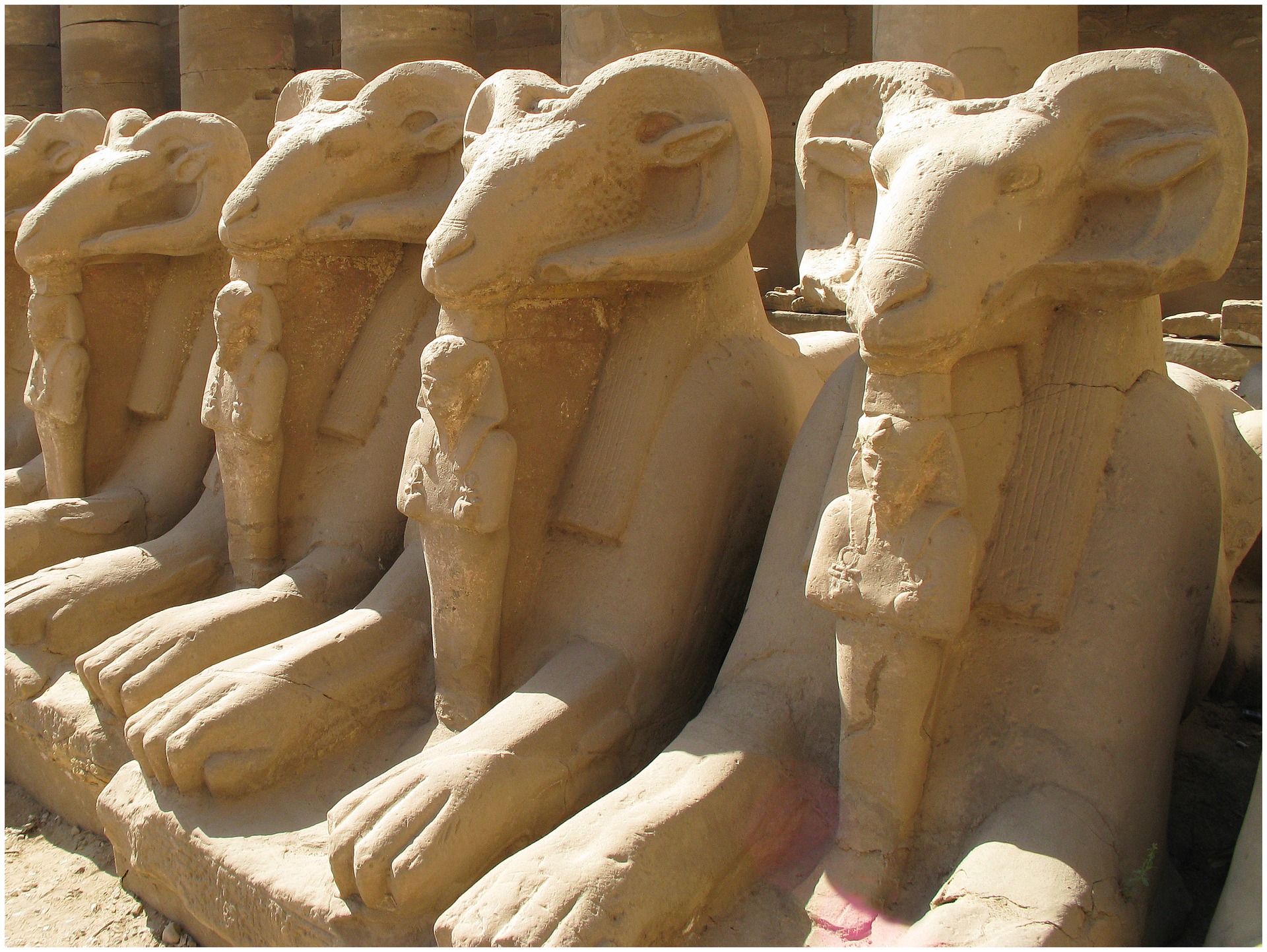An Egyptian archeological mission led by renowned archaeologist Zahi Hawass has discovered the 3,000-year-old Golden City, also called the Mount of Mount Athos.
The ancient city was built during the reign of Amenhotep III, the ninth king of the 18th dynasty, who ruled Egypt from 1391 to 1353 BC. This city was active during the joint regency of the great king with his son, the famous Amenhotep IV / Akhenaten. It remained in the use of the next kings Tutankhamun and Ai.
Egypt’s mission was surprised to find the largest administrative settlement in Ancient Egypt.
“Many foreign missions searched for the city and never found it. We started our work by searching for the morgue temple of Tutankhamun, as the temples of both Horemheb and Ai were found in this area,” Hawass said.
“The streets of the city are surrounded by houses, some of which have walls up to 3 meters high,” Hawass continued. – “The city stretches west, all the way to the famous ancient village of Deir el-Medina”
Betsy Brian, a professor of Egyptology at Johns Hopkins University in Baltimore, USA, said: “This is the second most important archaeological discovery from Tutankhamun’s tomb.”
“The discovery of the Lost City will not only give us a rare view of ancient Egyptian life when the Empire was in its richest period, but will also help us shed light on one of history’s greatest mysteries: why did Akhenaten and Nefertiti decide to move to Amarna?” Brian added.
The excavation area is located between the temple of Ramesses III in Medinet Hub and the temple of Amenhotep III in Memnon. The Egyptian mission began work in this area in search of the tomb of Tutankhamun.
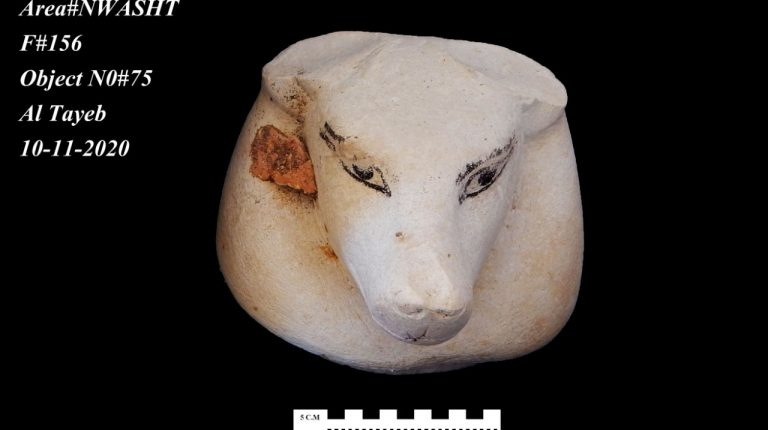
Tutankhamun’s successor, King Ai, built his temple on the site that later adjoined on its southern side to the temple of Ramesses III in Medinet Hub.
Egyptologists believe that the temple of Ai may have previously belonged to Tutankhamun, as two colossal statues of the young king were found there. The northern part of the temple is still under the sands.
Excavations began in September 2020, and a few weeks later, much to the surprise of the team, the formation of mud bricks began to appear in all directions. What they found was a place of a big city in good condition, with almost full walls and rooms filled with the tools of everyday life.
Archaeological layers have remained intact for millennia, left by ancient inhabitants as if it were yesterday.
The first purpose of the mission was to date this settlement. Hieroglyphic inscriptions found on the clay caps of wine vessels. Historical records tell us that the settlement consisted of three royal palaces of King Amenhotep III, as well as the administrative and industrial center of the Empire.
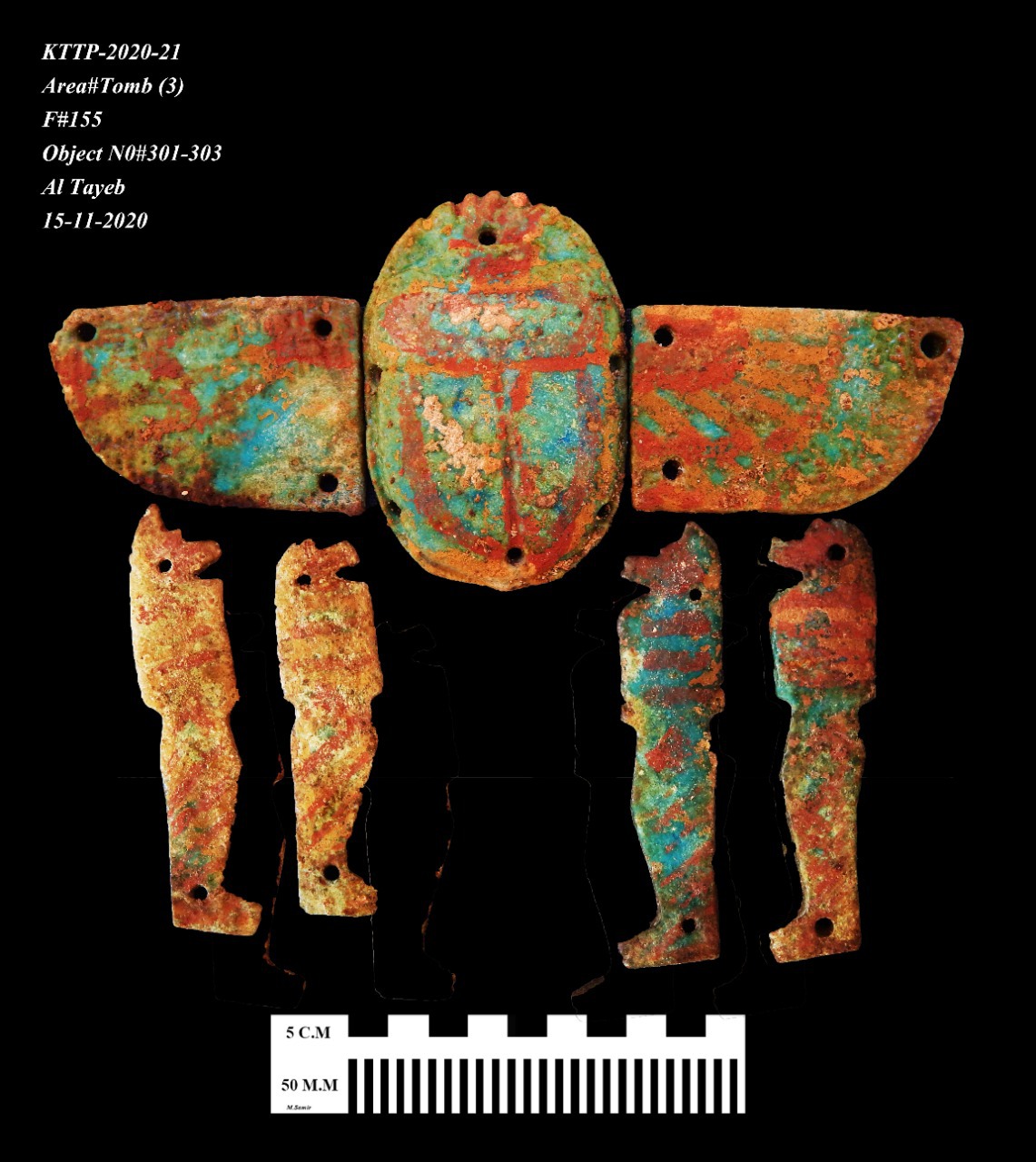
A large number of archeological finds, such as rings, scarabs, colored pottery and mud bricks, on which the cartouches of King Amenhotep III were sealed, confirmed the dating of the city.
In just seven months of excavations, several areas have been discovered.
In the southern part, the mission found a bakery, a cooking area, an oven and pottery. From its size, it can be argued that the kitchen served a very large number of workers and employees.
The second district, which is still partially covered, is an administrative and residential district with larger and more orderly units.
This area is surrounded by a zigzag wall, only one access point leads to the inner corridors and residential areas. The only entrance makes us think that it was some kind of security, with the ability to control the entrance and exit to closed areas.
Zigzag walls are one of the rare architectural elements in ancient Egyptian architecture, mainly used in the late 18th dynasty. The third area is a shop.
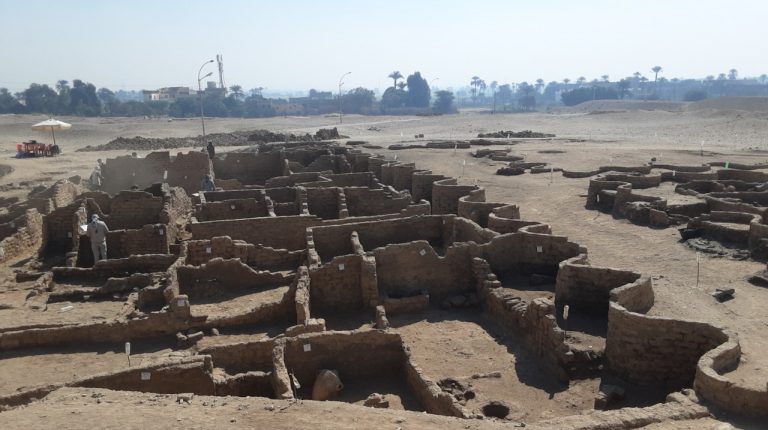
On the one hand, a production area for the production of bricks, which was used to build temples and outbuildings. The bricks have seals with a cartouche of King Amenhotep III (Neb Maat Ra).
On the other hand, a large number of molds for the production of amulets and delicate decorative elements. This is another evidence of extensive activities in the city to make decorations for both temples and tombs.
In all the excavated areas, the mission found many tools used in certain industrial activities, such as spinning and weaving.
Slag for the manufacture of metal and glass has also been identified, but the main area of such activity has not yet been identified.
Two unusual burials of a cow or bull were found in one of the rooms. Investigations are underway to determine the nature and purpose of this practice.
And an even more magnificent burial of a man found with his arms outstretched on his side and the remains of a rope wrapped around his knees. The location and position of this skeleton are rather strange, and more investigations are underway.

This valuable information not only gives us the names of two people who lived and worked in the city, but confirms that the city was active during the time of King Amenhotep III’s association with his son Akhenaten.
The excavations also revealed a mud seal with inscriptions that can be read: “gm pa Aton”, which can be translated as “the domain of blinding Aton”, the name of the temple built by King Akhenaten in Karnak.
As the story goes, a year after making this pot, the city was abandoned and the capital moved to Amarna. But was it? Why? And was the city repopulated when Tutankhamun returned to Thebes?
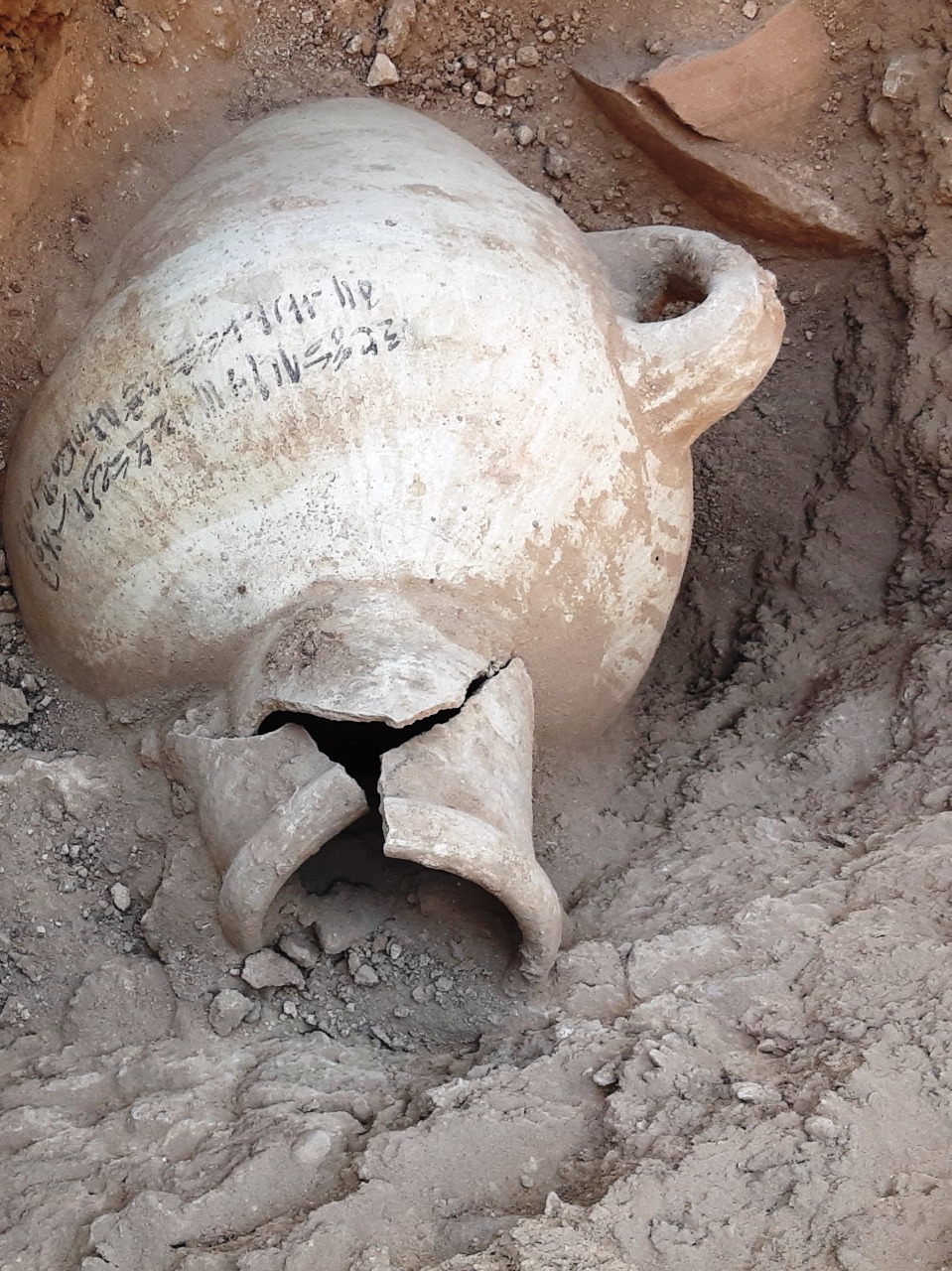
Only further excavations in this area will reveal what really happened 3,500 years ago.
To the north of the settlement, a large cemetery was discovered, the scale of which has not yet been determined.
So far, the mission has found a group of rock-cut tombs of various sizes, which can be reached by stairs carved into the rock. They have in common the construction of tombs with the Valley of the Kings and the Valley of the Nobles.
The work continues, and the mission hopes to find untouched tombs filled with treasures.

